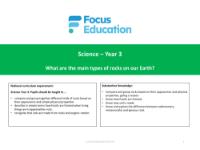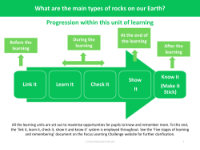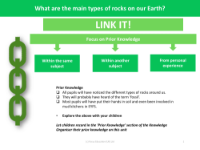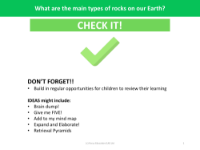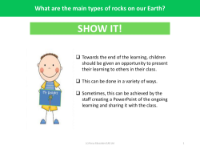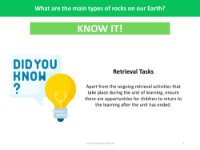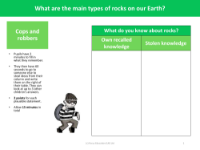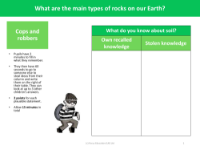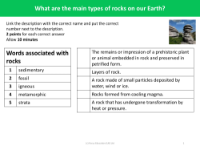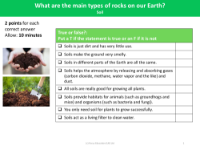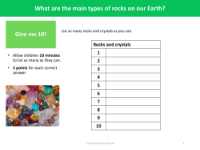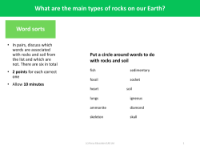Knowledge organiser - Rocks and soil - Year 3
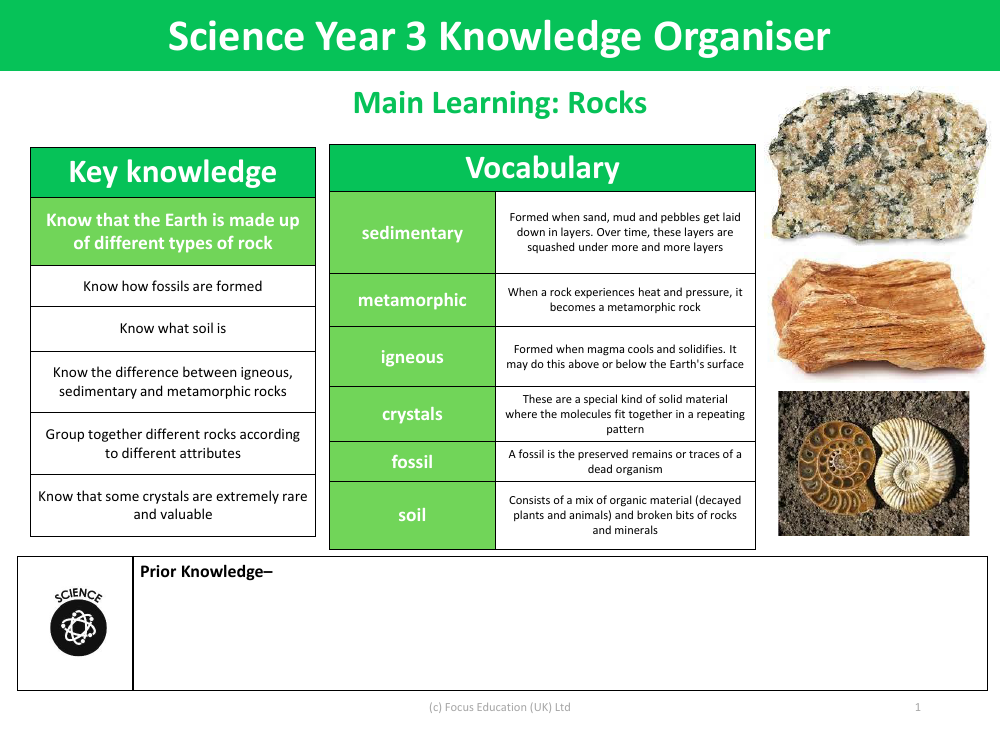
Science Resource Description
This knowledge organiser is designed for Year 3 students studying rocks and soil, providing them with essential vocabulary and key knowledge about geology. The vocabulary section introduces terms such as 'sedimentary', which refers to rocks formed from layers of sand, mud, and pebbles that are compressed over time. 'Metamorphic' rocks are those that have been transformed through heat and pressure, while 'igneous' rocks are created when magma cools and solidifies, either above or below the Earth's surface. Students will learn about 'crystals', which are materials with molecules arranged in a repeating pattern, and 'fossils', which are the preserved remains or traces of once-living organisms. The term 'soil' is explained as a combination of organic matter from decayed plants and animals, along with broken bits of rocks and minerals.
The key knowledge section outlines the fundamental concepts that students are expected to understand. They should know the different types of rocks that make up the Earth and the process by which fossils are formed. Additionally, students should be able to differentiate between igneous, sedimentary, and metamorphic rocks and categorise various rocks based on their attributes. An understanding of the composition and function of soil is also essential. Furthermore, the organiser highlights that some crystals are not only unique in structure but can also be exceedingly rare and valuable. This knowledge organiser serves as a foundation for the main learning theme of rocks in the Year 3 science curriculum, building on any prior knowledge the students may have.
